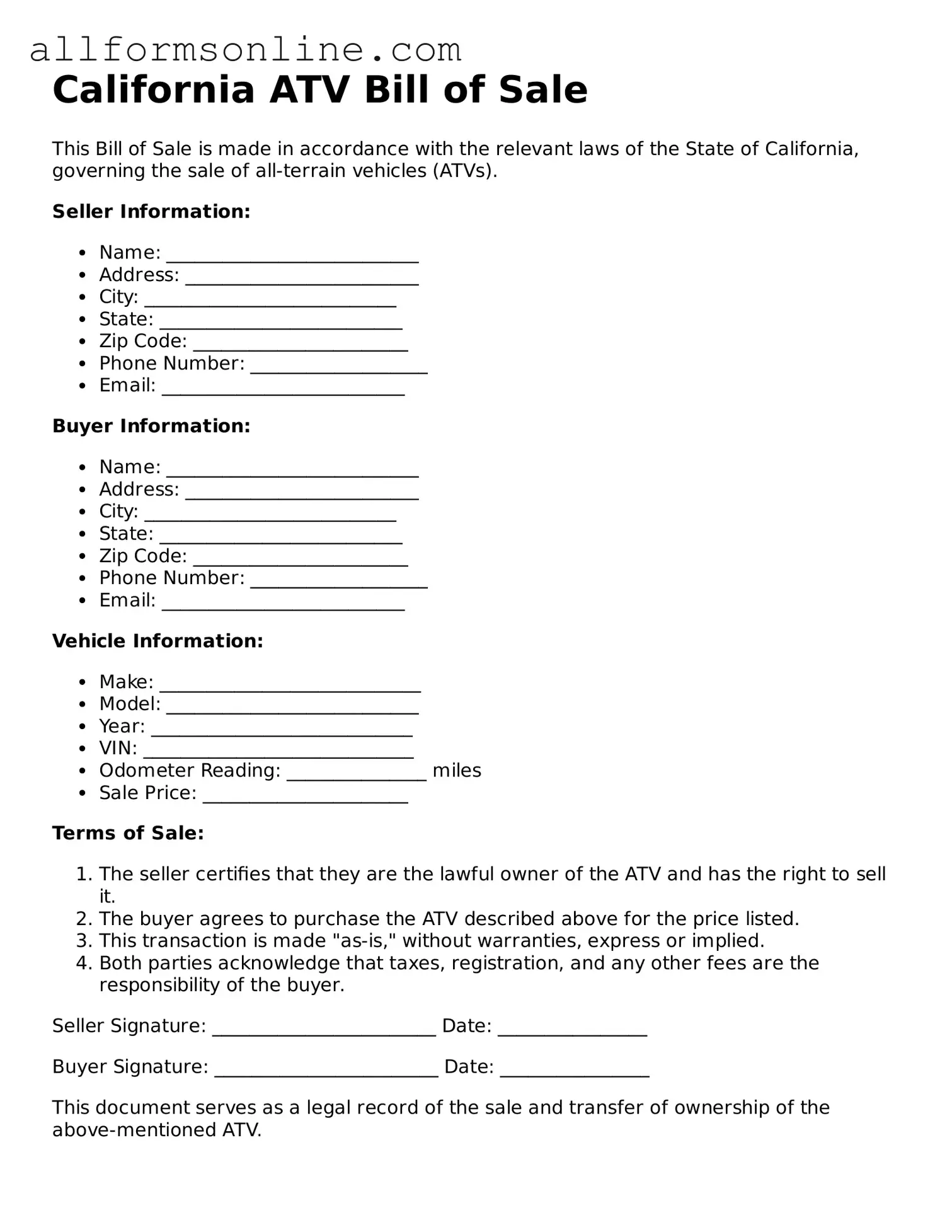What is a California ATV Bill of Sale?
A California ATV Bill of Sale is a legal document that records the transfer of ownership of an all-terrain vehicle (ATV) from one party to another. This form serves as proof of the transaction and includes essential details such as the vehicle's identification number, the sale price, and the names of both the buyer and the seller.
Is a Bill of Sale required for an ATV in California?
While a Bill of Sale is not legally required in California for the sale of an ATV, it is highly recommended. This document can help protect both parties in the event of disputes regarding ownership or the terms of the sale. Additionally, having a Bill of Sale may simplify the registration process with the California Department of Motor Vehicles (DMV).
What information should be included in the Bill of Sale?
The Bill of Sale should include the following information: the names and addresses of the buyer and seller, the ATV's make, model, year, and Vehicle Identification Number (VIN), the sale price, and the date of the transaction. Both parties should sign and date the document to validate the sale.
Can I create my own Bill of Sale?
Yes, you can create your own Bill of Sale. However, it is important to ensure that all necessary information is included and that the document is clear and accurate. Many templates are available online, which can help guide you in drafting a comprehensive Bill of Sale.
Do I need to have the Bill of Sale notarized?
Notarization is not required for a Bill of Sale in California, but it can add an extra layer of security and legitimacy to the document. If both parties feel more comfortable having the Bill of Sale notarized, they may choose to do so.
What should I do with the Bill of Sale after the transaction?
After the transaction, both the buyer and seller should keep a copy of the Bill of Sale for their records. The buyer may need to present this document when registering the ATV with the DMV. It is wise to retain the Bill of Sale for future reference, especially if any issues arise regarding ownership.
How does the Bill of Sale affect registration with the DMV?
The Bill of Sale serves as proof of ownership when registering the ATV with the California DMV. The buyer will need to present the Bill of Sale along with other required documents, such as the previous title and proof of identity. This documentation helps ensure a smooth registration process.
What if there are issues after the sale?
If issues arise after the sale, such as disputes over ownership or condition of the ATV, the Bill of Sale can serve as a crucial piece of evidence. It outlines the terms of the sale and can help clarify responsibilities. If necessary, parties may seek legal advice to resolve any disputes.
